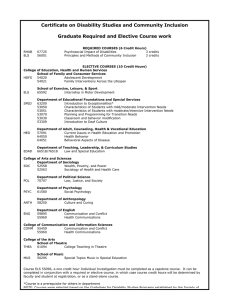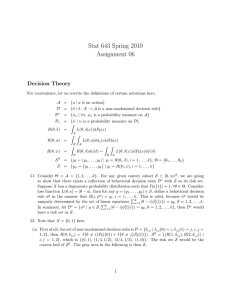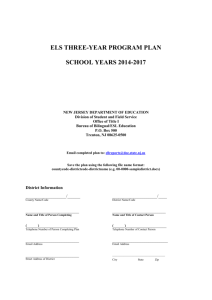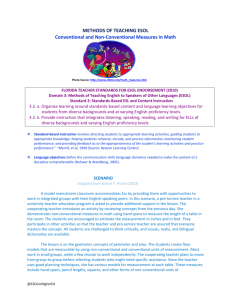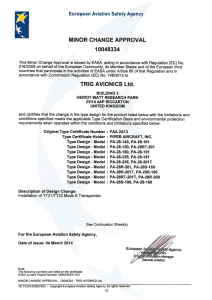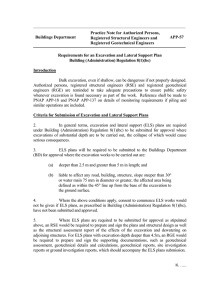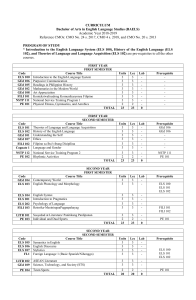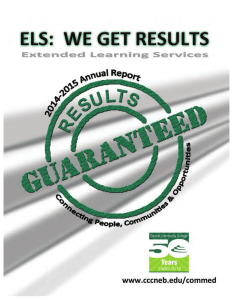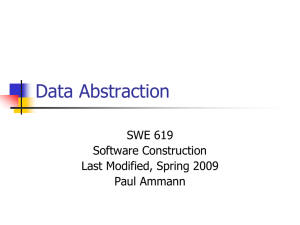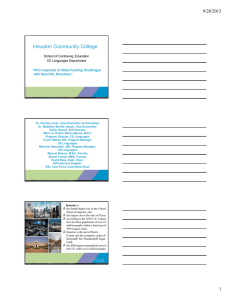Module 2
advertisement
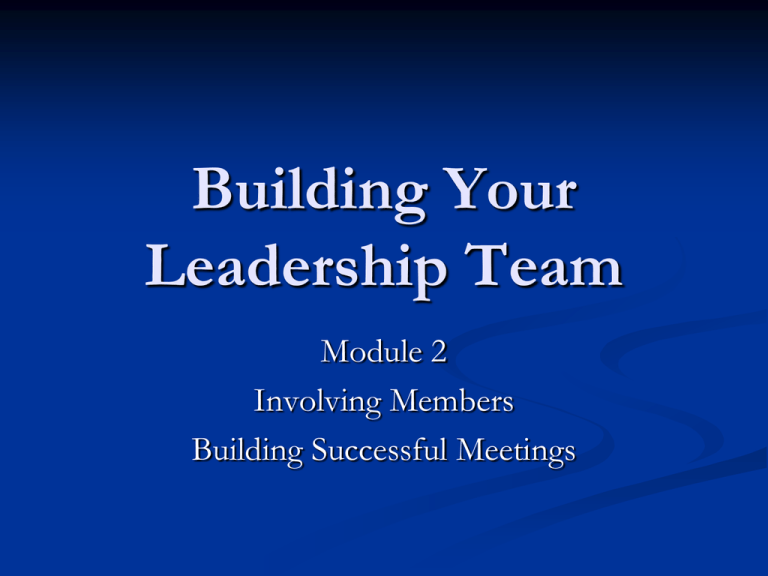
Building Your Leadership Team Module 2 Involving Members Building Successful Meetings Building Your Leadership Team Shared Leadership A group functions more effectively when all its members accept responsibility for the work and life of the group.. … this shared sense of responsibility is known as shared leadership. Comparison Classical and Shared Leadership Classical Displayed by a person’s position in a group or hierarchy. . Leadership evaluated by whether the leader solves problems. Leaders provide solutions and answers. Shared Identified by the quality of people’s interactions rather than their position. Leadership evaluated by how people are working together. All work to enhance the process and to make it more fulfilling. Comparison – continued Classical Shared Distinct differences between leaders and followers: character, skill, etc. Communication is often formal. People are inter-dependent. All are active participants in process of leadership. Can often rely on secrecy, deception and payoffs. Communication is crucial with a stress on conversation. Values democratic processes, honesty and shared ethics. Drawing from material in Gloria Nemerowicz and Eugene Rosi (1997) Education for Leadership and Social Responsibility Developing Shared Leadership For such leadership to develop we need to pay special attention to three things. We need to encourage: (Gastil 1997) Ownership. Problems and issues need to become a responsibility of all with proper chances for people to share and participate. Learning. An emphasis on learning and development is necessary so that people can share, understand and contribute to what’s going on. Sharing. Open, respectful and informed conversation is central. Member Involvement/Engagement Definition What is it? Why – Why is it important? How – How is this done? Member Involvement – What? What do we mean when we use the terms member involvement and member engagement? Actively involving advisory leader system members in each step of the program development process. Member Involvement – Why? Why is it crucial to do this? Research Program Impact Program Support Member Involvement - How How do we make this happen? Know what we want them to do for us…the most important ROLES AND TASKS they can perform to enhance you’re program. Know your ADVISORY LEADERS…their skills, networks, resources MATCH people and tasks. Member Involvement Program Development Process Assess Need Develop Educational Plan Identifying problems Laying the Groundwork Targeting Audiences/Setting goals Planning & Implementing Evaluate Determine Impact Report to our Publics Member Involvement Levels of Involvement Levels of Involvement Level 1 Level 2 Level 3 Strive for quick success with new members by quickly assigning level 1 tasks. Strive for involvement at all three levels. Help ELS members “grow” through the levels. I II III Member Involvement Assess Need Identifying the problem Laying the Groundwork Roles Elements of Programming Tasks Skill/Training Needed Member Involvement Develop Educational Plan Targeting Audiences Setting Goals Implementing Learning Experiences Roles Elements of Programming Tasks Skill/Training Needed Member Involvement Evaluation Determining Impact Reporting to our publics Roles Elements of Programming Tasks Skill/Training Needed Making It Happen! We know: WHO we need to involve. WHAT we want them to do. Now let’s talk about how we make best use of our meeting time with ELS members to bring all of this about. …or HOW do we do this! ELS Meetings - Research What does the research tell us? Number of meetings Successful components Agent Involvement Interaction Meeting Length Planning Successful Meetings Four components of successful meetings! R - review and evaluate recent programs/events E - educate and explore P - plan events and participation E – engage and encourage Include each of the four components in every meeting to establish structure and routine in your meetings. Planning Successful Meetings R - Review the past! Educational activities/events conducted since the last meeting. Needs Assessments conducted since the last meeting. Public Relations and Marketing activities that have occurred since the last meeting. Items that were tabled/discussed at the last meeting. Any item left hanging from previous mtgs. Planning Successful Meetings E- Educate Members and Explore New Opportunities Provide a learning experience in every meeting! Help ELS Members Build their skills Learn something new about your Extension Program Study and explore program issues Planning Successful Meetings Educational Component When considering what the educational component should be, consider: Program Goals Program Needs New Data New Research Unaddressed Issues/Problems identified in previous meetings Leadership Skills needed by members to carry out their ELS role Information to help members learn more about CES and/or their role Planning Successful Meetings Educational Component When considering who should present the educational component, consider: CEAs/CEDs Collaborators/Partners Specialists PDCs/DEDs Other educators Community Leaders Elected Officials Planning Successful Meetings P- Plan for the Future Plan for upcoming educational programs and events encouraging participation from all members. Provide a calendar/list of upcoming educational programs/events. Provide a detailed list of needed tasks for each activity; provide time for ELS members to select the tasks they will perform. Make volunteering/assigning tasks a routine part of each mtg. Encourage ELS members to enlist other volunteers to perform identified tasks. Remember to follow up on assignments. Planning Successful Meetings E- Engage and Encourage Members Plan roles and tasks members will play in other areas of program development Include team building; exercises Recognize and celebrate accomplishments. Thank individuals for specific roles/tasks they have played since last meeting. Planning Successful Meetings E- Engage and Encourage Members Remember Do: Meetings should be fun! Members should leave with a “task” or assignment. Members have roles in all program development steps. Team building occurs in every meeting; plan it! Thanks and recognition for what members have done is a great motivator. Personal is important; celebrate personal accomplishments, relate to their family/network Planning Successful Meetings E- Engage and Encourage Members Remember Don’t: Monopolize the conversation (under 50%) Show up unprepared Be negative Feel like you have all the answers Expect to get it perfect the first time Summary Training Module 1 – Who Module 2 – What and How Progress Program Development Team 4-H Program Development Coordinators Marilyn Poole – NE District Lori Purcell – NW District Laura Perry Johnson – SW District Teresa Harvey – SE District ANR Program Development Coordinators Norman McGlohon – NE District Sheldon Hammond – NW District Ken Lewis – SW District Phil Torrance – SE District FACS Program Development Specialists Janet Valente – NW & SW District Laurie Cantrell – NE & SE District
